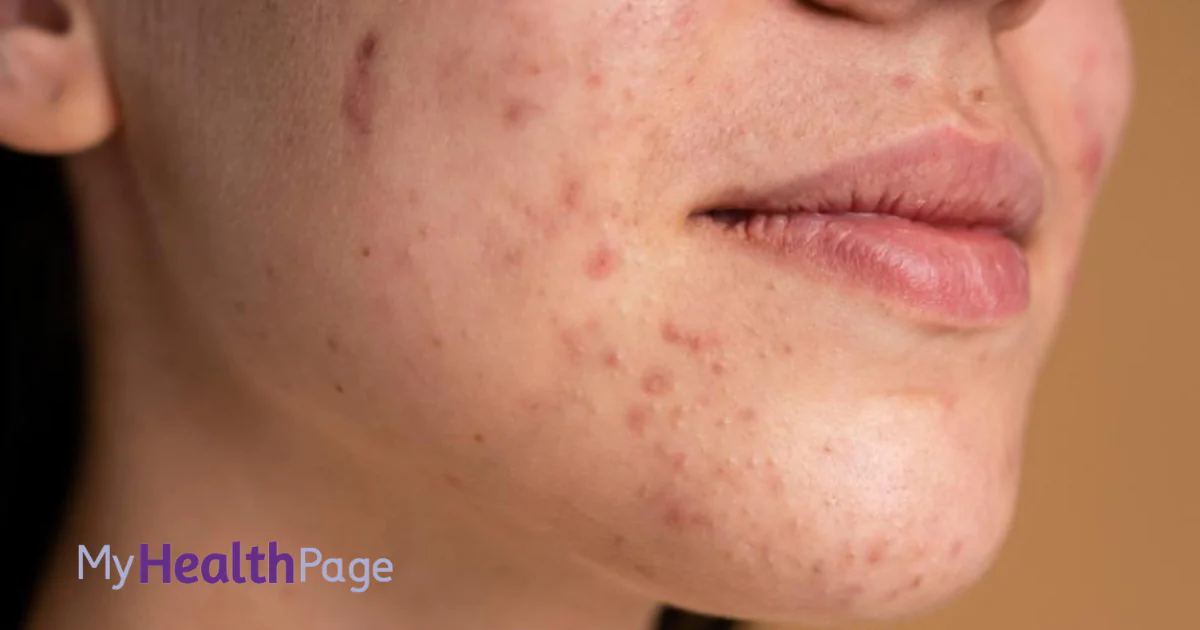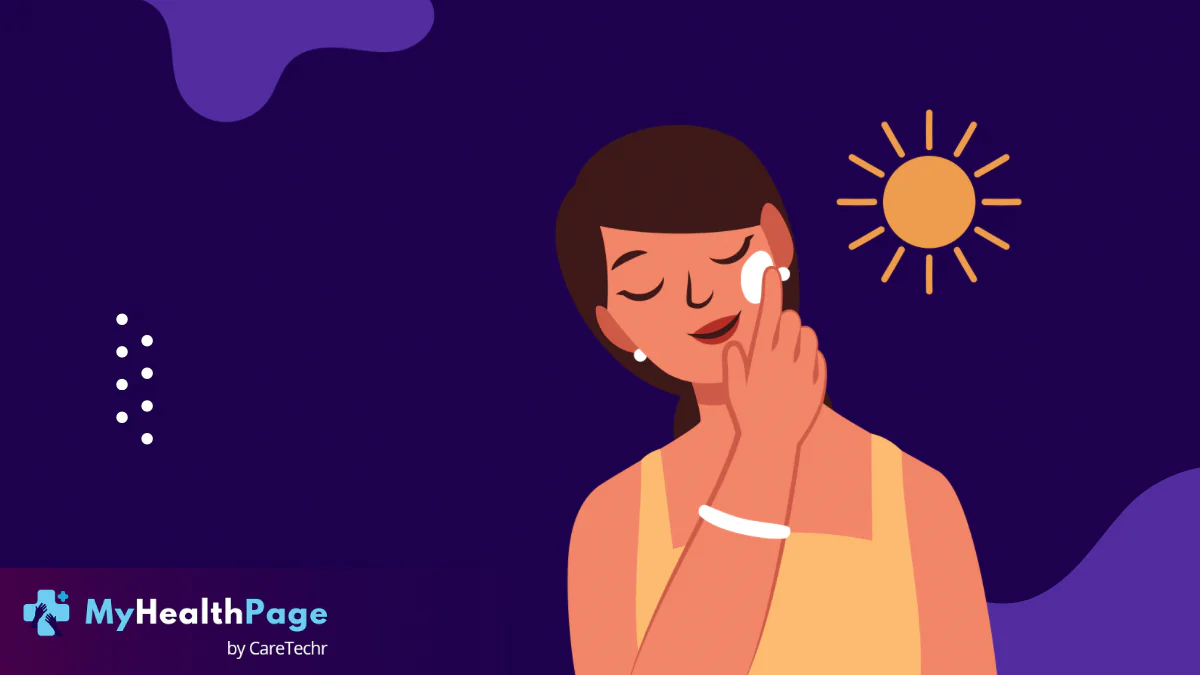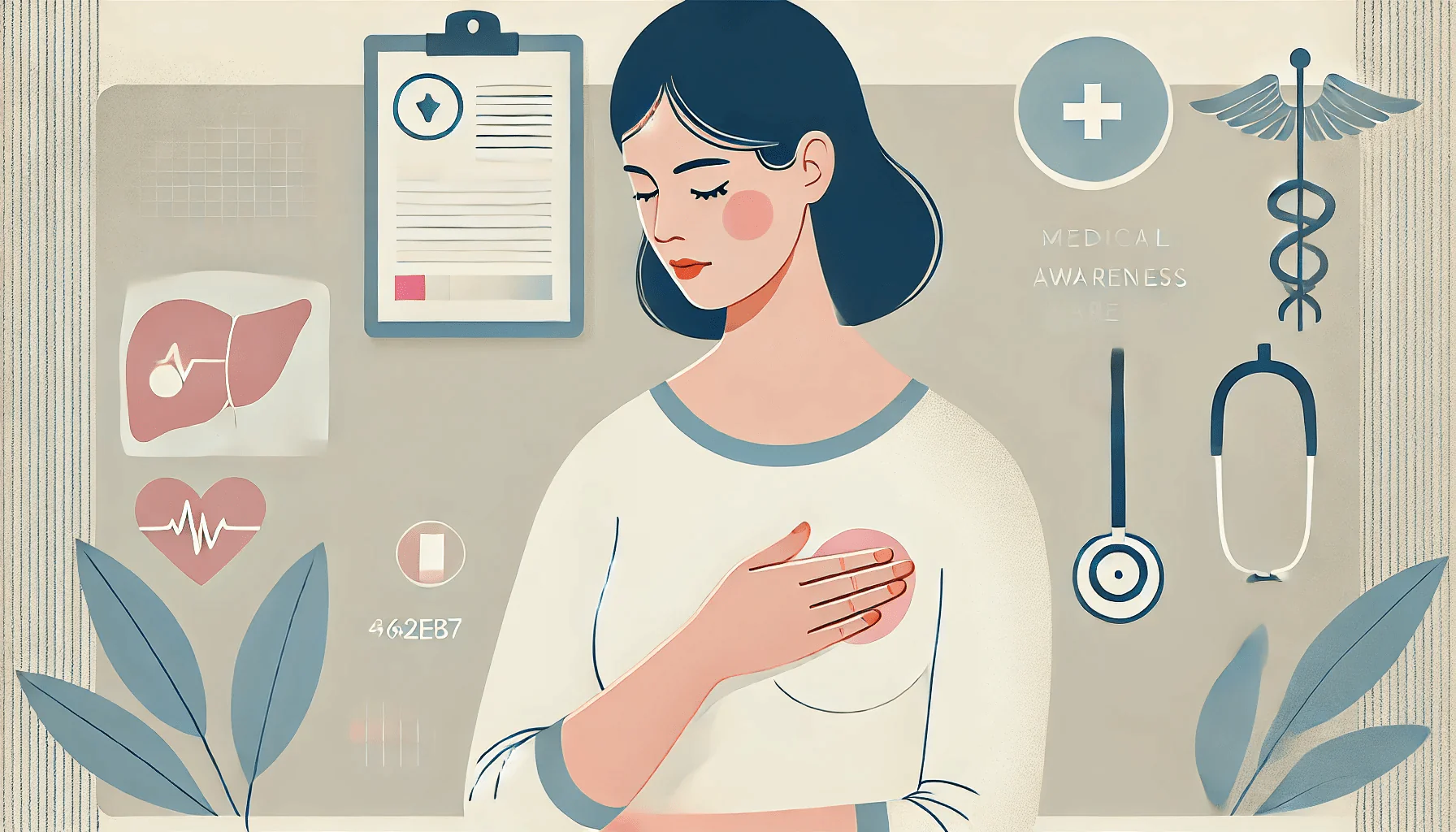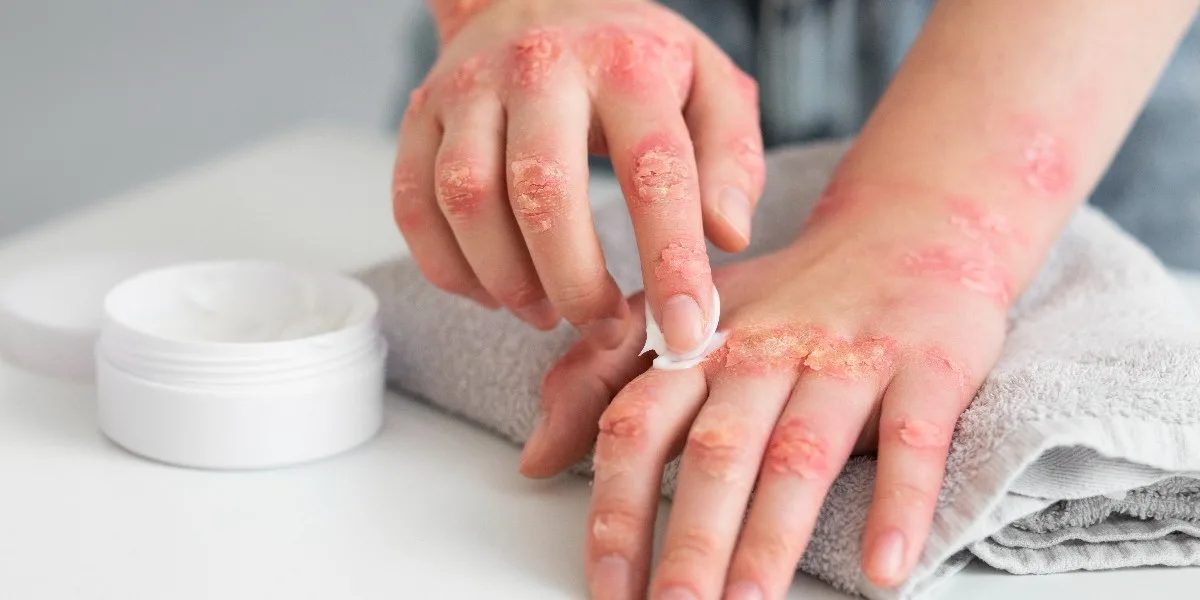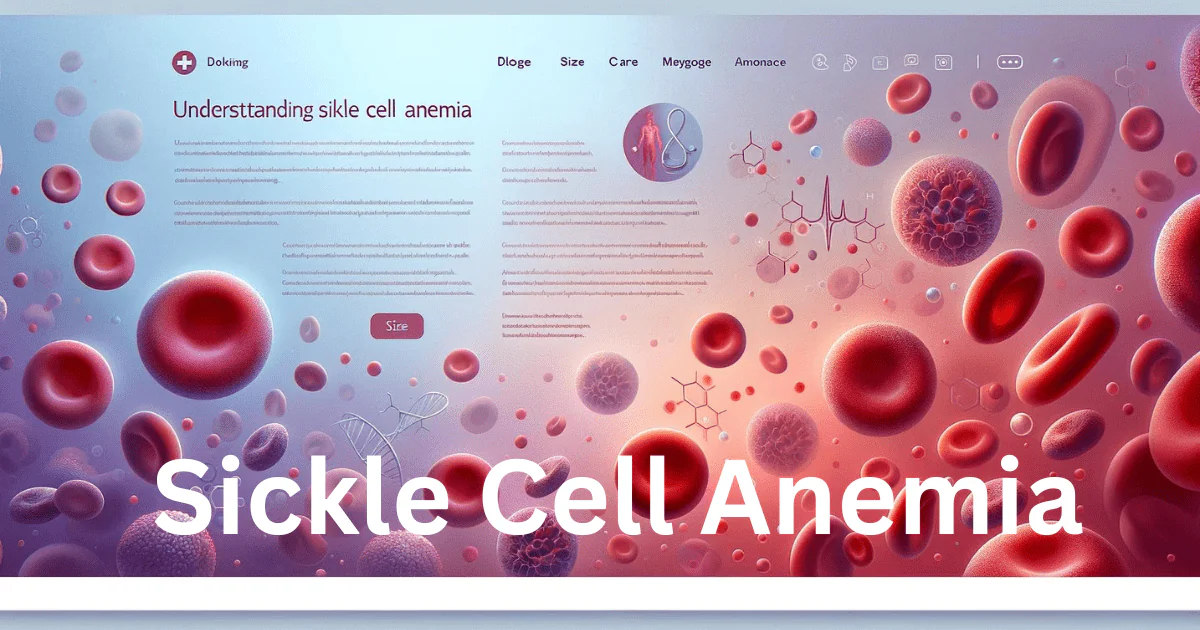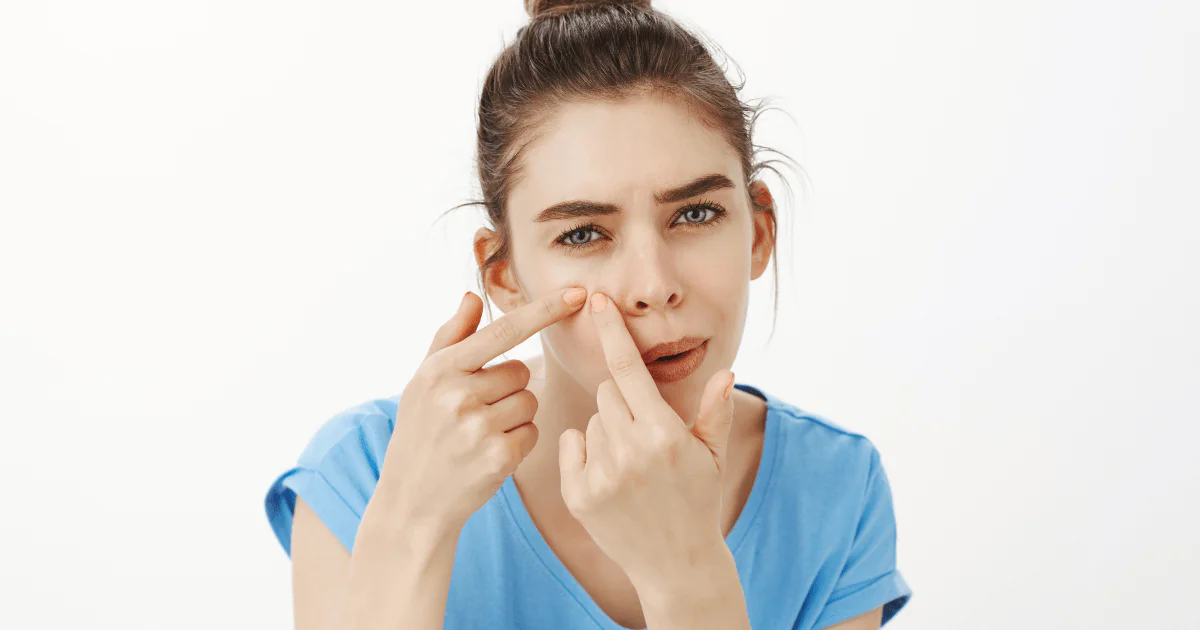Image by Freepik
1.What Is Cystic Acne?
Definition and Overview
Cystic acne is a severe form of acne, known for its Hidden lesions (A lesion is an abnormal or damaged area of tissue in the body) and potential to cause significant skin inflammation. It’s characterized by the presence of cysts, which are closed, pus-filled nodules that develop under the skin’s surface. These cysts are larger than common pimples and can be very painful. Unlike regular acne, which might be triggered by pores clogged with excess oil, dead skin cells, and bacteria, cystic acne involves deeper skin layers and is often linked to hormonal fluctuations, genetics, and other internal factors.
Distinction from Other Types of Acne
Cystic acne differs from other types of acne in several ways:
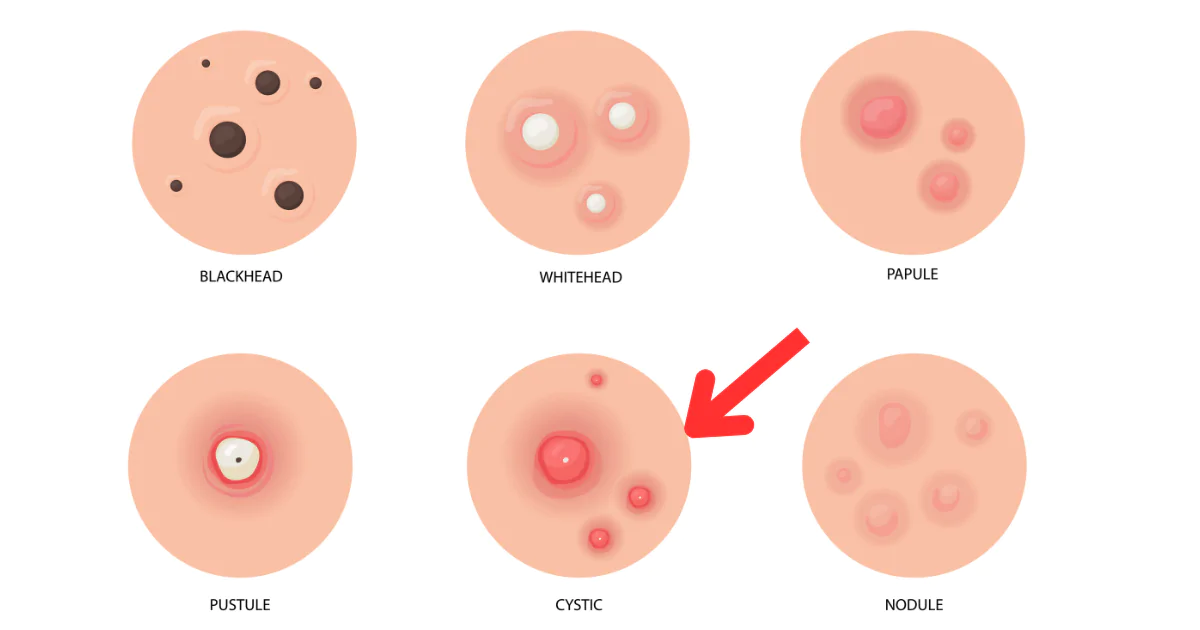
Image by pch.vector on Freepik
Depth and Severity: While common acne forms near the skin’s surface, cystic acne lesions are deeper and more severe.
Size and Appearance: Cystic acne nodules are bigger than regular pimples and can be painful. They often have a white or yellow top because of pus inside them.
Scars: Due to its severity and depth, cystic acne carries a higher risk of scarring compared to milder forms of acne.
Treatment Complexity: Treating cystic acne usually requires more intensive and often systemic treatments, unlike milder acne, which may respond to topical treatments.
Development Process: Unlike blackheads or whiteheads, which result from clogged pores, cystic acne involves an intense inflammatory response deep within the skin.
2.Understanding the Causes of Cystic Acne
Biological Factors
Cystic acne is often rooted in biological factors that go beyond surface-level skin conditions. Key elements include:
Hormonal Changes: Fluctuations, especially in androgens (male hormones present in both men and women), can significantly increase the chances of cystic acne. These changes are common during puberty, menstrual cycles, pregnancy, and menopause.
Genetics: A family history of cystic acne can increase an individual’s risk. Genetic predisposition plays a crucial role in how the skin reacts to hormonal fluctuations and inflammation.
Overactive Sebaceous Glands: These glands produce sebum, an oily substance that can clog pores when produced in excess, leading to acne.
Inflammation: Cystic acne is defined by a deep inflammatory response, which can exacerbate the severity of the acne lesions.
External and Lifestyle Influences
External factors and lifestyle choices can also contribute to or worsen cystic acne:
Diet: High glycemic foods and dairy products have been linked to acne in some studies, though the connection isn’t entirely clear-cut.
Stress: Elevated stress levels can increase the production of hormones like cortisol, which can in turn trigger oil production and exacerbate acne.
Environmental Factors: Pollutants and humidity can clog pores and increase the risk of acne.
Skincare Products: Using products that are comedogenic (products that are designed to clog pores) can worsen acne.
Medications: Certain medications, including some corticosteroids, androgens, or lithium, are known to cause or aggravate acne.
3.Identifying Cystic Acne
Symptoms and Appearance
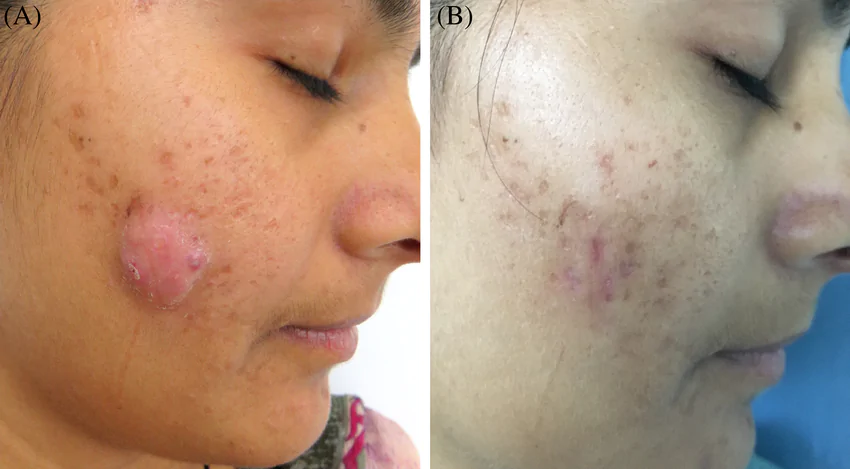
Image credit : research gate
Cystic acne is easily recognized because it’s notably severe. It’s generally more intense than common acne, with the affected areas showing noticeable signs of inflammation and irritation. The lesions are not just surface level but extend deeper into the skin, causing more significant discomfort and a higher risk of scarring.
Key symptoms include:
- Large, red, and swollen cysts.
- Painful and tender to the touch.
- Persistent lesions that can last for weeks or months.
- Pus-filled cysts indicative of infection and inflammation.
- Firm or thickened skin texture around the cysts.
Common Areas of Development
Cystic acne tends to develop in areas with a higher concentration of oil-producing glands. These include:
- The lower face, particularly the jawline and cheeks.
- The back, known for its dense presence of sebaceous glands.
- The chest area, although less common compared to the face or back.
- The shoulders, also prone due to the presence of numerous oil glands.
4. Diagnosis of Cystic Acne
Proper diagnosis of cystic acne is crucial for effective treatment and management. This process typically involves professional assessment methods and careful differentiation from other skin conditions.
Professional Assessment Methods
Dermatologist Consultation: The primary step in diagnosing cystic acne is consulting a dermatologist, a medical professional specializing in skin conditions. They have the expertise to evaluate skin issues accurately.
Skin Examination: A thorough examination of the affected skin areas is conducted. Dermatologists look for the characteristic features of cystic acne, such as the size, depth, and pain level of the cysts.
Medical History Review: Understanding the patient’s medical and family history is vital. This may include questions about the duration of the acne, previous treatments, family history of similar conditions, and any relevant hormonal issues.
Possible Tests: In some cases, dermatologists might order specific tests. These can include hormonal tests to check for imbalances or blood tests to rule out other underlying conditions that might contribute to severe acne.
Differentiating from Similar Skin Conditions
Differentiating Factors: Cystic acne is differentiated from other types of acne by the size, depth, and persistence of the cysts, as well as the level of pain and potential for scarring.
Exclusion of Other Conditions: Conditions like folliculitis, rosacea, or keratosis pilaris can sometimes mimic the appearance of acne. A dermatologist will rule out these and other conditions during the diagnosis.
Observation of Response to Treatments: Sometimes, the response to specific treatments can help in differentiating cystic acne from other skin conditions. For instance, if standard acne treatments are ineffective, it might suggest a more severe form like cystic acne.
5. Comprehensive Treatment Approaches For Cystic Acne
Treating cystic acne often requires a multi-faceted approach, combining medication, advanced therapies, and at-home care. The severity and persistence of cystic acne typically necessitate more robust treatments compared to milder forms of acne.
Medications: Oral and Topical
Topical Treatments: These include retinoids, benzoyl peroxide, and antibiotics, which help reduce inflammation and bacteria on the skin. Topical retinoids are particularly effective in unclogging pores and preventing new lesions.
Oral Medications: For more severe cases, oral antibiotics may be prescribed to reduce bacteria and inflammation. Oral contraceptives can help regulate hormones in women, while isotretinoin (commonly known as Accutane) is often used for severe, resistant acne due to its ability to reduce sebum production.
Advanced Therapies and Procedures
Corticosteroid Injections: For immediate relief of painful cysts, corticosteroid injections can reduce inflammation and prevent scarring.
Laser and Light Therapy: These treatments can reduce the bacteria on the skin and lessen oil production. They may also improve the appearance of scars.
Chemical Peels and Microdermabrasion: These procedures can help to exfoliate the skin, remove dead skin cells, and reduce the appearance of scars left by acne.
Home Remedies and Over-the-Counter Solutions
Skincare Routine: Using non-comedogenic and oil-free skincare products can help prevent further clogging of pores.
Gentle Cleansing: Washing the face twice daily with a gentle cleanser can remove excess oil and dirt without irritating the skin.
Over-the-Counter Products: Products containing salicylic acid or benzoyl peroxide can help manage mild cystic acne symptoms.
Natural Remedies: Some people find relief with natural remedies like tea tree oil or green tea extract, known for their anti-inflammatory properties. However, these should be used with caution and preferably under dermatological advice, as they can sometimes irritate sensitive skin.
6. Preventive Measures and Skincare Tips For Cystic Acne
Preventing cystic acne involves a combination of daily skincare practices and broader lifestyle adjustments. While not all cases of cystic acne can be prevented due to factors like genetics and hormonal fluctuations, these measures can help reduce the severity and frequency of outbreaks.
Daily Skin Care Recommendations
Gentle Cleansing: Use a gentle, non-abrasive cleanser to wash your face twice daily. Over-washing or using harsh scrubs can irritate the skin and aggravate acne.
Non-Comedogenic Products: Choose skincare and makeup products labeled as “non-comedogenic,” meaning they are less likely to clog pores.
Moisturizing: Even oily and acne-prone skin needs hydration. Opt for oil-free and non-comedogenic moisturizers to keep the skin balanced.
Sun Protection: Use a broad-spectrum sunscreen daily. Some acne treatments can make skin more sensitive to sunlight, increasing the risk of sunburn.
Avoid Picking or Squeezing: Picking at acne can lead to infections, more severe acne, and scarring.
Lifestyle Adjustments for Prevention
Dietary Considerations: A balanced diet with a low glycemic index may help manage acne. Avoiding dairy and processed foods high in sugar and fats is often recommended.
Stress Management: High stress can exacerbate acne. Practices such as yoga, meditation, regular exercise, and sufficient sleep can help manage stress levels.
Regular Exercise: Physical activity can improve blood circulation and reduce stress. However, it’s important to cleanse the skin after sweating to prevent clogged pores.
Avoiding Certain Medications: Some medications, like certain steroids or hormonal treatments, can trigger acne. Discuss with your doctor if you suspect your medications are affecting your skin.
Regular Dermatologist Visits: Regular check-ups with a dermatologist can help in the early detection and management of acne, as well as adjustments to skincare routines and treatments as needed.
7. Outlook and Prognosis
The outlook and prognosis for individuals with cystic acne largely depend on the severity of the condition, the effectiveness of the treatment plan, and adherence to long-term management strategies.
Long-Term Management
Continuous Care: Cystic acne often requires ongoing treatment and skincare maintenance to prevent flare-ups. This might include the continued use of topical treatments or periodic visits to a dermatologist.
Lifestyle Modifications: Sustained changes in diet, stress management, and skincare routines can play a significant role in managing cystic acne. These practices not only help in controlling current breakouts but also in preventing future occurrences.
Monitoring and Adjusting Treatments: Because cystic acne can change over time, treatments may need to be adjusted. Regular checkups with a dermatologist are crucial to assess the effectiveness of the current treatment and make changes as needed.
Expectations for Recovery and Recurrence
Variability in Outcomes: Recovery experiences can vary widely among individuals. Some may find that their acne resolves completely with treatment, while others might experience repeating occurrences.
Risk of Scarring: Cystic acne has a higher risk of leaving scars due to its depth and severity. Early and effective treatment can reduce this risk. In cases where scarring occurs, treatments such as laser therapy, microneedling, or chemical peels might be considered.
Psychological Impact: The journey with cystic acne can be emotionally challenging. It’s important to address not just the physical symptoms but also the psychological impact, which might include seeking support from a therapist or support group.
Related:How to Stop Hair Loss Due to Dandruff: Simple Steps
Sources:
- “Acne” NHS. Available at: [https://www.nhs.uk/conditions/acne/].Accessed 02/06/2024
- “A Look at the Rise in Adult Acne in Women.” Dermatology Times. Available at: [https://www.dermatologytimes.com/view/a-look-at-the-rise-in-adult-acne-in-women].Accessed 02/06/2024
- “Stress and Acne” webmd. Available at: [ Stress and Acne].Accessed 02/06/2024
- “ACNE: TIPS FOR MANAGING” American Academy of Dermatology. Available at: [https://www.aad.org/public/diseases/acne/skin-care/tips].Accessed 02/06/2024
- “Food for Thought: A Closer Look at Diet and Acne ” practical dermatology. Available at: [https://practicaldermatology.com/articles/2014-sept/food-for-thought-a-closer-look-at-diet-and-acne#:~:text=Ingestion%20of%20high%20GI%20foods,(%3E%2070)%20when%20possible.].Accessed 02/06/2024

